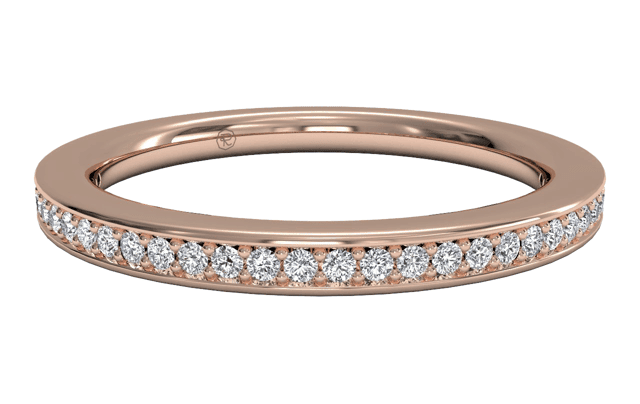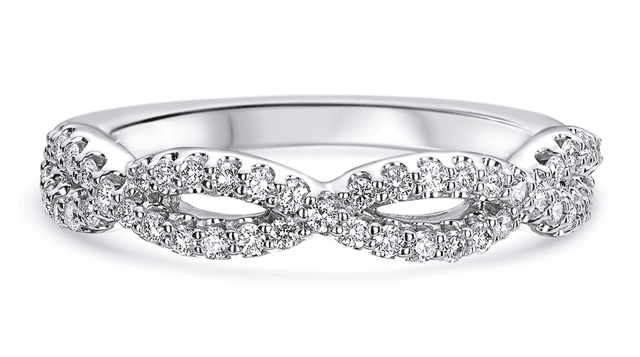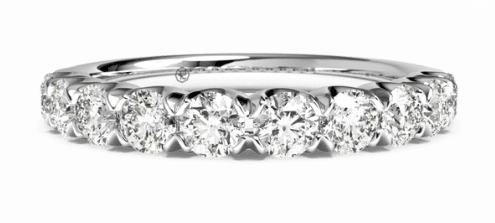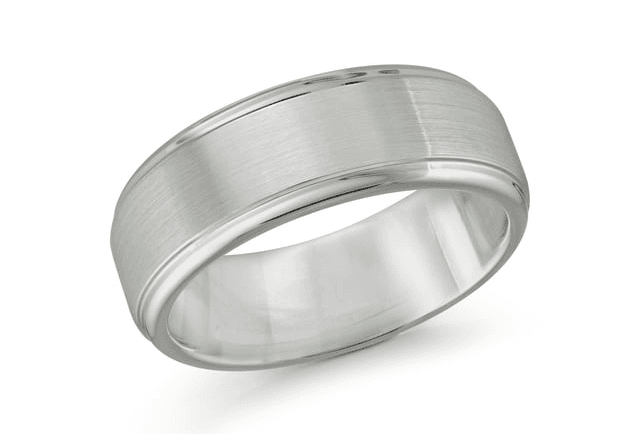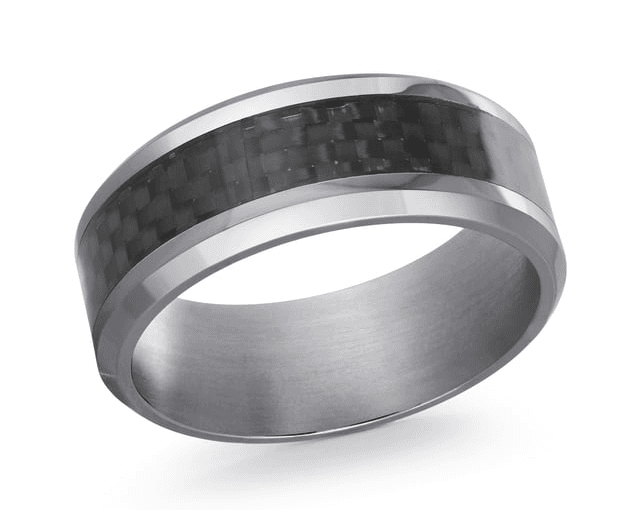Selecting the Perfect Wedding Band Metal: Exploring the Pros and Cons of Precious Metals

Choosing the ideal wedding ring can feel overwhelming for many couples since it involves more than just choosing a design. With numerous factors to consider, one of the most significant components is choosing a ring metal that suits your image and lifestyle. The metal you select for your wedding rings affects the band's appearance, durability, and overall value. By understanding the unique qualities of each metal, you and your partner can make an informed decision and find ideal wedding bands that will stand the test of time.
Yellow gold
Yellow gold has long retained its place as the most traditional metal for engagement rings and wedding bands, boasting a rich history that dates back to the ancient civilizations of Greece and Rome. While many believe that higher-karat gold is superior (not to be confused with a diamond's carat) it may not be the best option for long-lasting durability. Pure 24-karat yellow gold is incredibly soft, making it susceptible to scratches, bending, and gemstone loss. In order to enhance its strength, gold alloys are created by combining it with other metals like copper and zinc. The gold used for wedding bands is typically either 14K gold, which contains 58.3% pure gold, or 18K gold, which contains 75% pure gold. Yellow gold wedding bands are versatile and can be worn by anyone, but they are particularly complementary to olive and darker skin tones. However, there are a few drawbacks to consider when choosing yellow gold as a wedding ring metal, including its durability and the need for occasional maintenance. While yellow gold is generally low-maintenance, it does require periodic polishing and cleaning to preserve its shine. Like all gold alloys, it is susceptible to scratches, especially when in contact with hard surfaces. On the bright side, yellow gold is an affordable option for wedding bands. Prices for 14K yellow gold are among the most budget-friendly compared to other materials available for both women's and men's wedding bands. This makes yellow gold an attractive choice for those seeking an elegant and classic look without breaking the bank.
Rose Gold:
For a softer and warmer aesthetic, rose gold is a truly exquisite wedding ring metal, crafted by combining pure gold with copper and silver. The result is an alluring pink color that sets rose gold apart. Renowned for its warm hue, many consider rose gold the epitome of romance in wedding bands. Similar to yellow and white gold, rose gold is available in different purity levels, with 14K and 18K being the most popular choices. One of many distinctive features of rose gold is its affordability, due to its relatively high copper content. Rose gold also complements all skin tones beautifully, from fair and rosy complexions to olive and darker skin tones. It's important to consider one potential disadvantage of rose gold as a wedding ring material; due to its copper content, individuals with sensitive skin should be mindful, as it may pose a slightly higher risk of causing skin issues. It's advisable to consult with a professional jeweler or dermatologist if you have concerns about potential reactions. Overall, rose gold offers an eye-catching choice for wedding bands, characterized by its delightful hue, durability, and affordability.
White Gold:
White gold possesses a captivating shine and a bright white color. Created by combining pure gold with metals like nickel, silver, and palladium, white gold has gained significant popularity in recent years as a modern and versatile choice for wedding bands, surpassing yellow gold as the preferred choice for both women's and men's wedding bands. Like yellow gold and rose gold, white gold is available in 14K and 18K, with 14K being the most durable option. The advantages of white gold lie in its stunning white color, which beautifully complements fair and rosy skin tones and its contemporary appearance. White gold is alloyed with stronger metals compared to yellow gold, enhancing its durability to an extent. The pristine hue of white gold beautifully complements white, colorless diamonds, making it an ideal choice for diamond engagement rings. However, it's important to note that lower color-grade diamonds may showcase a more pronounced yellow tint when set in white gold. Additionally, white gold requires periodic rhodium plating to maintain its color and luster, making white gold somewhat of a higher maintenance option than yellow and rose gold. Rhodium plating is a simple and cost-effective service that can be easily performed by any experienced jeweler. One consideration when choosing white gold is its nickel content, which may trigger metal allergies in some individuals, especially with 14K white gold. If you have known sensitivities, it's advisable to explore alternative options or ensure that the white gold jewelry is hypoallergenic. Despite the need for occasional maintenance and the potential for metal allergies in some cases, white gold remains a popular choice. Its gleaming white color, compatibility with various skin tones, durability, and ability to enhance sparkling diamonds make it a favored metal for engagement rings and wedding bands. White gold wedding bands also offer a sophisticated and elegant look at a more affordable price point than platinum.
*Ritani offers a hypoallergenic, nickel-free white gold option for individuals with sensitive skin. Contact us for more information.
Platinum:
Renowned for its rarity, platinum is not only a luxurious choice but also one of the strongest precious metals available. Interestingly, the scarcity of platinum during war times led to the creation of white gold as an alternative. Platinum is an excellent option for securely holding precious stones in place for a lifetime. That is why prongs made of platinum are often used in rings crafted from less durable metals like white gold. The resilience of platinum allows it to withstand scratches and everyday wear and tear more effectively. While platinum is among the more expensive metal choices, its exceptional durability justifies the higher cost. Platinum bands are highly resistant to damage in everyday life, maintaining their color and ensuring you will never need to replace them, and their sheen will endure over time. If you encounter any scratches or tarnishing, a skilled jeweler can easily polish them away, restoring their original shine. In addition, platinum is a hypoallergenic metal, making it a superb option for individuals with sensitive skin.
Tungsten:
Often used in men’s wedding rings, tungsten is known for its exceptional durability, surpassing titanium in strength, making it four times stronger. It stands as the ultimate choice for scratch resistance and offers an affordable price tag. This pure element significantly impacted the world when it replaced carbon-filament lamps in lightbulbs in 1904, and it continues to revolutionize the world of wedding bands. Similar to titanium, tungsten is low-maintenance but cannot be easily resized, so careful consideration is advised for the perfect fit. While tungsten boasts remarkable hardness and resistance to tarnish, it can be brittle and prone to fracturing if subjected to impact or dropped on a hard surface. Like titanium, tungsten wedding bands require no additional maintenance due to their inherent hardness.
Tantalum:
In recent years tantalum has gained popularity as a distinctive metal for men's wedding rings. Bearing a resemblance to platinum, tantalum delivers a shine reminiscent of precious metals. Wedding bands crafted from tantalum boast impressive durability, effectively resisting scratches, warping, and common signs of wear. Unlike tungsten, tantalum is less brittle, eliminating the risk of shattering if the ring is dropped. Tantalum is an excellent choice for individuals with sensitive skin due to its hypoallergenic nature. It is also relatively pliable, enabling the option for resizing if necessary. While it is more affordable than platinum, tantalum rings typically carry a higher price tag compared to tungsten. Overall, even though it is somewhat more expensive than tungsten, tantalum is an excellent choice for men's wedding rings because it offers durability, a stylish and masculine appearance, and outstanding value for its cost.
Cobalt:
Cobalt has also become a favored choice for men's wedding bands, offering an affordable alternative to white gold and platinum without compromising on style. Similar to other metals used in jewelry, cobalt is alloyed with elements like iron, tungsten, and chromium to enhance its durability and malleability. Cobalt resembles other white metals, particularly white gold, but it surpasses gold in its hardness and resilience against scratches. Cobalt wedding bands require less maintenance compared to white gold and do not require periodic dipping to preserve their appearance. It's worth noting that resizing cobalt rings can be challenging, so it's important to ensure you have the correct ring size before purchasing. With its durability, affordability, and similarity to white gold, cobalt presents an appealing option for individuals seeking a robust and cost-effective wedding band.
Delve into our broad and diverse collection of women's and men's wedding rings.
Contact us today with any questions you may have—we can help you find the wedding band that is perfect for you!

